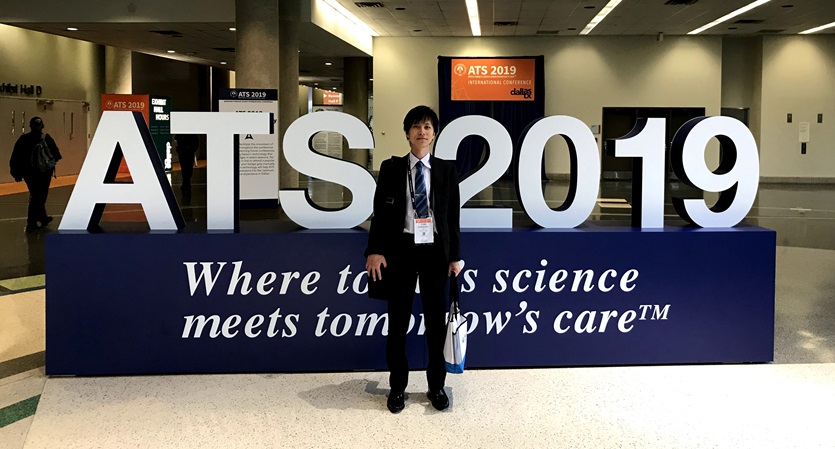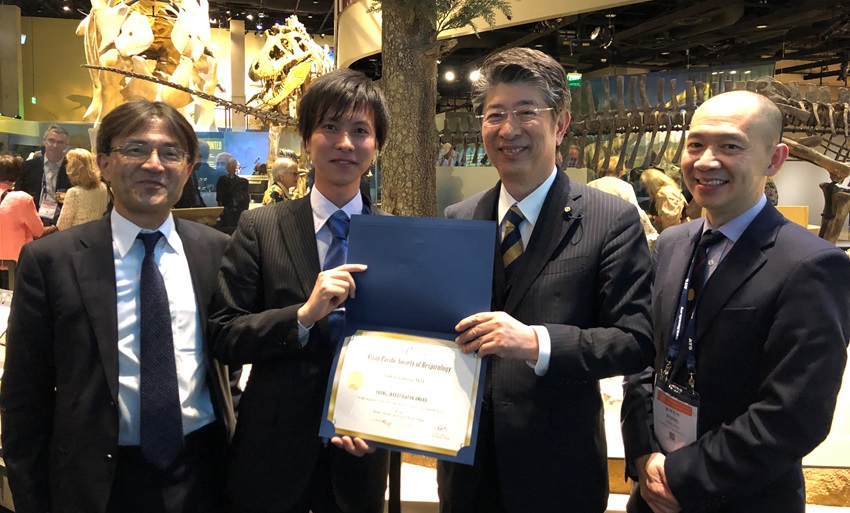Taiki Furukawa
Nagoya University Hospital, Japan
Report from the winner of the APSR Travel Award to attend the ATS International Conference

I am very grateful to the APSR for the support to let me attend the 2019 ATS International Conference in Dallas, Texas, through their Young Investigator Travel Award.
The Conference had many participants, sessions and symposia which contained the latest information and future trends in the field of respiratory medicine. In particular, I was interested in the session of Clinical Topics in Pulmonary, "Closing the Evidence Gap in Lung Disease with Real World Data". This was interesting because I fully realized the problems related to the gap, was almost the same around the world. I felt that the demand for new technology using real world data to create evidence was increasing year by year.
I was very pleased to have an opportunity to present our work in the mini symposium session, 'ILD: Diagnosis and Prognosis'. This session included active discussion, and fortunately I received precious opinions for my presentation entitled "Development of a Machine Learning Combination with Deep Learning for Diagnosing Idiopathic Pulmonary Fibrosis in Interstitial Lung Disease".
Although idiopathic pulmonary fibrosis (IPF) is known as a fatal lung disease, the diagnosis has been problematic in multidisciplinary discussion, surgical lung biopsy, and agreement rate of diagnosis. But there was no automated diagnosis algorithm of IPF using deep learning, despite its urgent need in a clinical setting.
Therefore, we retrospectively analyzed consecutive suspected idiopathic interstitial pneumonias (IIPs) patients at a referral centre. The 644 eligible suspected IIPs patients (54.7% IPF) had 128,800 images of HRCT and corresponding label images.
For each pixel recognition of interstitial lung disease pattern on HRCT, the average accuracy of semantic segmentation was 96.4%. Using a random forest – another machine learning algorithm – the accuracy of diagnosing IPF was 91.5%. Adding clinical data, the accuracy was 93.2%, with excellent sensitivity, specificity, positive predictive value, negative predictive value, and kappa coefficient (97.4, 88.0, 90.7, 96.6, and 86.1%, respectively). Multivariate cox hazard analysis adjusted for baseline age, gender, and %FVC showed IPF diagnosis of machine learning combination was a significant prognostic factor (HR, 3.3; 95% CI, 2.2-4.5; p < 0.001; c-statistics 0.786). The prognostic prediction ability was equivalent to the IPF diagnosis using multidisciplinary discussion. We concluded that a machine learning algorithm could easily, rapidly, and noninvasively diagnose IPF with high accuracy, sensitivity, specificity, kappa coefficient, and good prognostic prediction.
Based on the opinion given by attendees, I will develop the system to provide ILD diagnosis to many facilities including hospitals without ILD experts.
Finally, I was very honoured to receive this award and I greatly appreciate the support of my collaborators. I will make further efforts to improve my research and would like to collaborate with many countries to improve health care.
Taiki Furukawa
Nagoya University Hospital, Japan
(Click any photo to enlarge)

